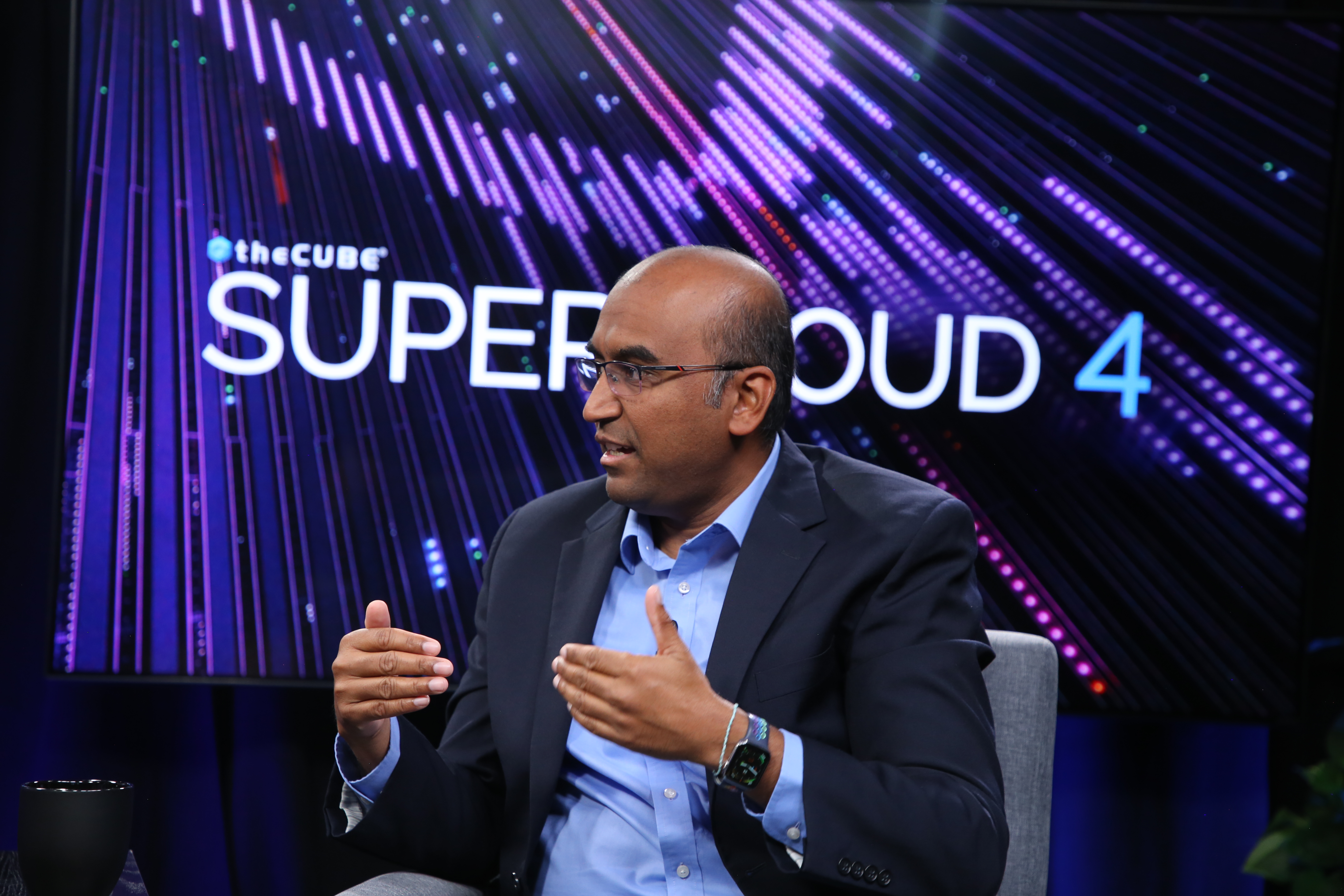 AI
AI
 AI
AI
 AI
AI
Some technologies help redefine the trajectory of progress, and generative artificial intelligence is emerging as one of those as it reshapes the landscape of computing and data-driven innovation, from software development to user experiences.
“All the generations and decades of work around AI and machine learning and intelligence around data has kind of had this potential energy that’s now been released with the current cloud, nex-gen cloud,” said Arun Subramaniyan (pictured), vice president of cloud and AI at Intel Corp. “With the advent of the promotion of ChatGPT — OpenAI educates and consumerizes the user experience — we are now in an era where it’s now known that this is a new path in front of us.”
Subramaniyan spoke with theCUBE industry analysts John Furrier and Dave Vellante at Supercloud 4, during an exclusive broadcast on theCUBE, SiliconANGLE Media’s livestreaming studio. They discussed the transformative potential of generative AI, exploring why it has become the focal point of discussions in the tech world and how it is poised to revolutionize enterprises while redefining the very nature of computing itself.
The era of gen AI has been ushered in by a confluence of factors, including the proliferation of cloud computing, the accumulation of massive data sets and the advent of technologies such as ChatGPT from OpenAI, according to Subramaniyan.
“You can combine your business expertise, your business users, along with a large language model that is either from an open-source community or something that you build together along with the community,” he said. “You can then put to use, that would fundamentally shift your time to value. That’s the significant difference we are seeing now, that you were not able to tap into before.”
Perhaps one of the most compelling aspects of gen AI is the potential to deliver ROI at an accelerated pace. Traditional AI and machine learning projects often took years to yield results. In contrast, in a recent study, 11% of surveyed companies reported moving closer to production within six to 12 months of adopting gen AI, a remarkable shift compared with the modest 8% to 9% return on investment achieved by traditional AI and machine learning projects after a decade of adoption, according to Subramaniyan.
“The advent of the cloud, the massive amounts of data we’ve been able to collect, all of the data transformation efforts in the industry and enterprises that’s gone on over the last decade, if you ask anybody, what is the ROI that you got out of that based on any number of different studies, it’s about 8% to 10% up to now,” he said. “The single biggest difference between then and now, after the gen AI advent, is you still need data scientists, but you don’t need them in armies.”
An intriguing concept was introduced — the rise of specialized AI models. Likening them to current AI models, such as ChatGPT, to college students with domain-specific knowledge, the future belongs to these expert models, tailored to specific tasks, Subramaniyan pointed out. These models, which may vary in size, have not fully emerged, but promise to dwarf the capabilities of current AI systems.
“You’re going to see that you’re going to go and change your axis on them, where this curve is going to get dwarfed based on what’s going to happen in the specialized AI world,” he said. “Take the pharmaceutical industry, for example. They are collectively sitting on data that’s about 100 times more than all the data that was used to build the largest models today.”
Data sharing does present its own set of challenges, both within enterprises and between organizations, according to Subramaniyan. Although the need for data exchanges may grow in the future, the immediate focus is on breaking down data silos within enterprises. This step is essential for maximizing the potential of generative AI.
“It’s really around adding the right kind of software and hardware acceleration across the board. Even if you’re looking at a low-power, low-cost device, it also has a specialized AI acceleration added onto it,” he said. “We are looking at this now from years of research and years of development into it. We are ahead of the curve. Pretty much every Intel PC you’re going to have out there, is also going to be an AI PC.”
Here’s the complete video interview, part of SiliconANGLE’s and theCUBE’s coverage of Supercloud 4:
Support our mission to keep content open and free by engaging with theCUBE community. Join theCUBE’s Alumni Trust Network, where technology leaders connect, share intelligence and create opportunities.
Founded by tech visionaries John Furrier and Dave Vellante, SiliconANGLE Media has built a dynamic ecosystem of industry-leading digital media brands that reach 15+ million elite tech professionals. Our new proprietary theCUBE AI Video Cloud is breaking ground in audience interaction, leveraging theCUBEai.com neural network to help technology companies make data-driven decisions and stay at the forefront of industry conversations.